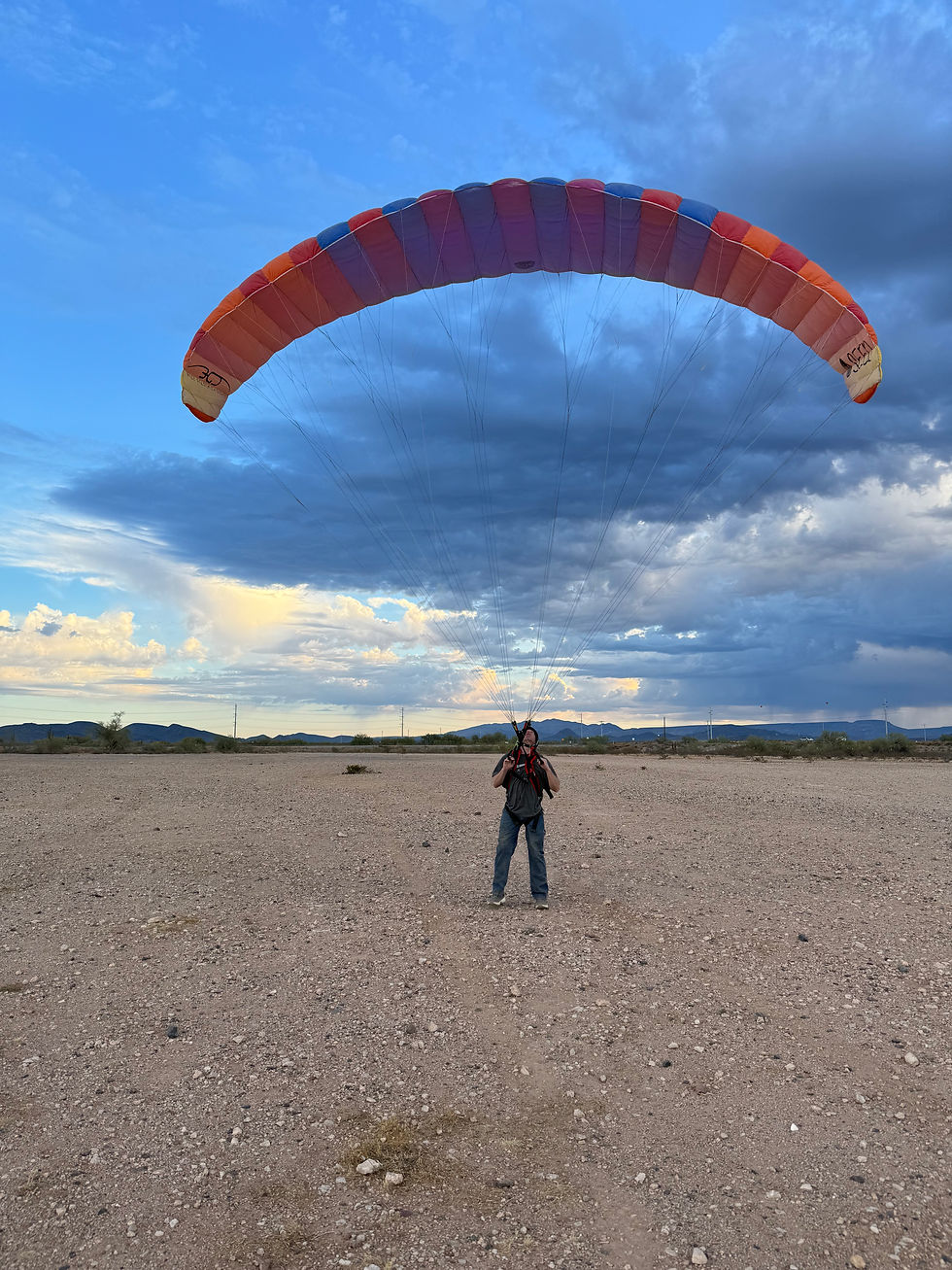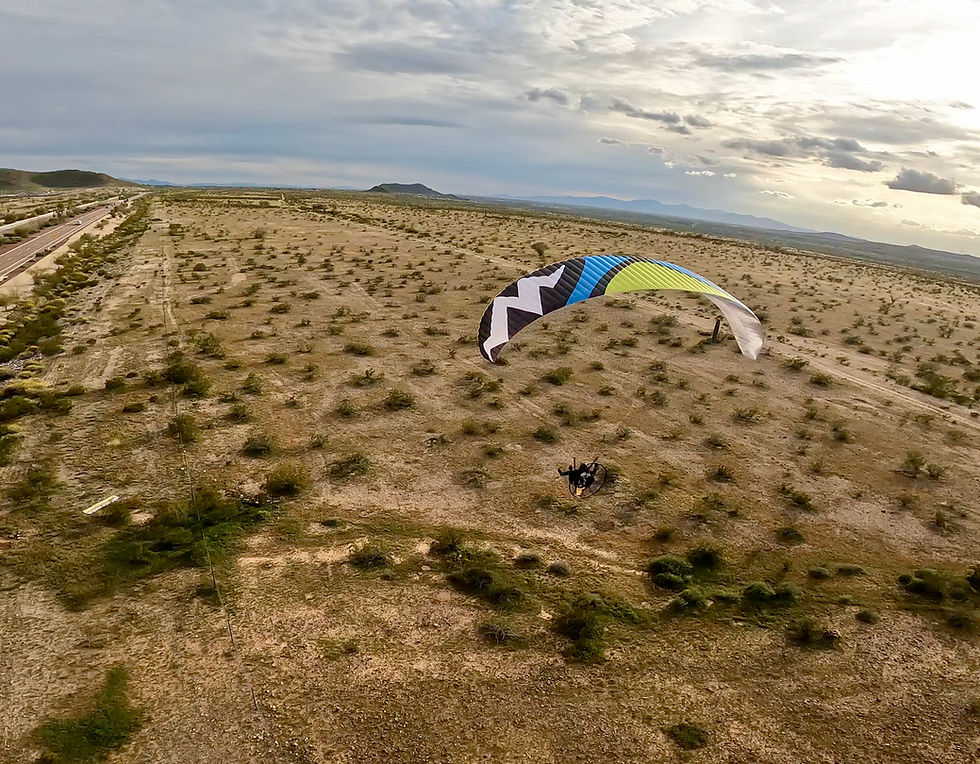Master the Skills of Paramotor Training
- Don Youngker
- Jul 10
- 4 min read
The thrill of soaring through the skies, feeling the wind rush against your face, and experiencing freedom like never before is what attracts many to the world of paramotoring. If you have ever dreamt of flying, then learning the essential skills of paramotor training could be the perfect adventure for you. In this post, we will explore the various aspects of paramotor training, why it’s essential, and how you can successfully master the skills needed to become a competent pilot.
Learn Paramotor Skills: The Basics of Paramotoring
Paramotoring is a fascinating sport that combines elements of flying with the simplicity of a lightweight aircraft. At its core, it involves a motorized wing that allows you to take off and land with ease. But before you hop into your harness, it’s vital to understand the components involved in this thrilling activity. You will need the following:
Paramotor: The engine and frame that provide thrust.
Wing: The inflatable canopy that lifts you into the air.
Harness: The seat connected to the wing and motor.
Safety Gear: Helmet, gloves, and protective clothing.
Taking the time to familiarize yourself with these components will lay a solid foundation as you progress through your paramotor training.

The Importance of Professional Instruction
While the allure of flying may inspire you to take the leap into paramotoring, it’s crucial to seek professional instruction. A certified instructor will provide you with a structured learning environment, ensuring you gain the necessary skills safely and efficiently. The benefits of professional training include:
Understanding Safety Protocols: An instructor will teach you essential safety practices, enabling you to minimize risks.
Technique Mastery: From ground handling to takeoff and landing, expert guidance will help you develop essential techniques quickly.
Knowledge of Equipment: Being informed about the equipment’s operation and maintenance prolongs its life and enhances performance.
Finding a reputable training program is paramount. Check out paramotor training options that offer comprehensive courses and experienced instructors.

How Much Does It Cost to Learn to Paramotor?
The cost of learning to paramotor can vary widely depending on several factors. Here’s what you can expect:
Training Courses: Depending on the school, a structured training course can range from $2,000 to $4,000. This typically includes ground school, flight time, and necessary equipment.
Equipment: Buying your own paramotor setup (wing, motor, harness) can set you back anywhere from $10,000 to $20,000. While renting might be an option during training, investing in your equipment leads to better customization and familiarity over time.
Licensing and Certification: Depending on your country’s regulations, you may need to obtain specific licenses. This can add a few hundred dollars to your overall training cost.
It’s worth keeping in mind that while the initial investment might seem high, the long-term benefits and experiences you gain from paramotoring are priceless. Once you gain proficiency, the ability to explore new heights and breathtaking landscapes is unparalleled.
Building Essential Skills
As you embark on your paramotor training journey, you’ll focus on several key skills. Master these, and you’ll be well on your way to becoming a proficient pilot.
Ground Handling
Ground handling is the first crucial skill you need to master. This relates to how you manage your wing while on the ground. It includes launching, controlling, and landing your wing without the motor. Training involves:
Inflation Techniques: Learning how to position yourself and your wing against the wind.
Control Inputs: Understanding brake inputs and body positioning to keep your wing stable.
Takeoff and Landing
Successfully taking off and landing are essential skills that can make or break your flying experience. Your instructor will guide you through various techniques, including:
Runway Selection: Choosing the right path for takeoff depending on wind conditions.
Stability Awareness: Recognizing and responding to changing wind conditions during takeoff.
Soft Landings: Practicing approaches to land smoothly and safely.
In-Flight Maneuvers
Once you’ve nailed takeoffs and landings, it’s time to work on in-flight techniques. Some key aspects include:
Steering: Utilizing brake lines to turn effectively.
Altitude Control: Learning how to ascend and descend in a controlled manner.
Emergency Procedures: Knowing what to do in unexpected situations, such as sudden drops or equipment failures.

Solo Flying: Taking the Leap
Once you have completed your training and practice sessions under the supervision of your instructor, you may feel ready to take your first solo flight. This moment is one of empowerment and freedom, but it’s important to remember a few crucial tips:
Choose the Right Conditions: Opt for clear skies and calm winds for your first solo flights.
Stay Within Your Comfort Zone: Start by flying in familiar areas and avoid huge distances initially.
Keep Practicing: Consistent practice will build confidence and proficiency.
As you gain more flights under your belt, the skies will open up new adventures and experiences.
Continuing Your Education
The learning process doesn’t stop after completing initial training. To become a skilled pilot, continue to expand your knowledge and experience. Consider:
Joining a Flying Club: Connecting with fellow enthusiasts can provide support, tips, and camaraderie.
Advanced Courses: Take additional training to learn advanced maneuvers or specialized flying techniques.
Safety Seminars: Educating yourself on safety practices and regulations will keep you informed for enjoyable experiences in the air.
In conclusion, mastering the skills of paramotor training opens up a world of adventure, freedom, and exploration. By seeking professional instruction, investing in your training, and consistently practicing essential skills, you can soar through the skies with confidence and joy. Ready to take the plunge? The sky is waiting!






Comments